Men of same profession flock together
Two doctors. Not just one common interest but two. Children are their professional interest and nature photography, especially birds, their passion. The outcome is a 204-page coffee table book ‘Serendipity of Wilderness’.
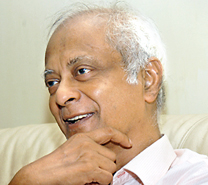
Prof. Harendra de Silva. Pic by Nilan Maligaspe
For well-known Consultant Paediatrician Prof. Harendra de Silva, it all began when as a child fascinated by his father’s box camera, he began clicking photographs at random.
The interest, however, ended when he lost the camera, “left it behind on a train”, he smiles. Fast forward to years later and as a Specialist he was able to buy a camera while in the United Kingdom and take a scene or two, mainly clinical photographs for teaching purposes.
With many around him wondering why he was carrying a camera, skin rashes or anything that ailed children and could be photographed were meticulously documented and put on slides. That chapter too ended when the camera broke.
It was in 2000 that Prof. de Silva bought himself a film camera, snapping “podi, podi” birds but the whole process of developing the film was costly. However, by 2003, he bought another camera, this time a digital one, quite advanced then but looking back from the present technology quite basic, he concedes.
But there was a problem. While he clicked numerous photos when travelling, with his driver being his ally and stopping whenever common birds, not the “exotic ones” such as a kingfisher was spotted on a telephone wire, Prof. de Silva’s hand used to shake.
It was then that he scrupulously trained himself to hold steady the camera and continued the photography in Nochchiyagama in the North Central Province where he was serving.
A life-changing disaster came next, the tsunami of 2004, and not only seeing dead and injured but also traumatised children, he says, “I was a nervous wreck. My senses were all gone.”
When then President Chandrika Kumaratunga mobilised him (he was Chairman of the National Child Protection Authority then) to put-together a database on children who had been orphaned, the images he captured left him distraught…….. “oluwa narak wela thibbe”, he says.
And to put his mind at ease, as a form of therapy, he went back to nature photography, for he felt it was good for life. Of course, his wife protested when he bought “a rather expensive camera”, he says, adding that “there’s no harm because I have no other vices such as alcohol or tobacco”.
 Shaheen’ the local resident race of the Peregrine Falcon in Sri Lanka. Pic by LF |
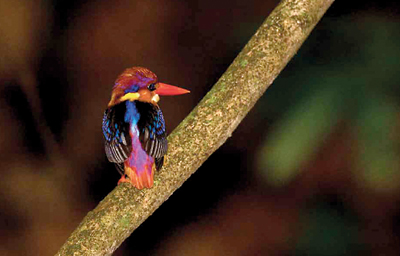 Oriental Dwarf Kingfisher also known as the Black-backed Kingfisher or Three-toed Kingfisher, the smallest in Sri Lanka. Pic by HdeS |
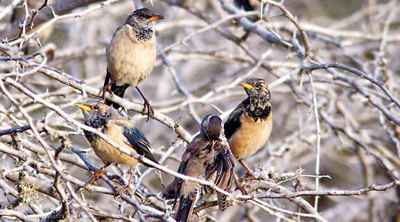 Rosy Starlings: A strong migrant that winters in India and tropical Asia. Pic by HdeS |
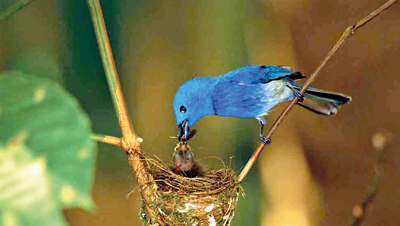 Black-naped Monarch Male feeding chicks. Pic by LF |
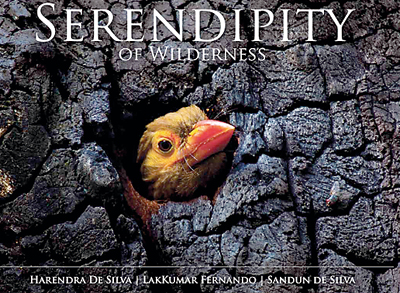 |
It was when he became a frequent visitor to Chilaw’s sand-spits where “there were lots of birds” for serious photography that Prof. de Silva’s path once again converged with that of Consultant Paediatrician Dr. LakKumar Fernando who was based in the area.
It was a Guru-Gola link – Dr. Fernando had been his student and later his Registrar at the Karapitiya Hospital and they had had a “constant dialogue on politics and patients”, says Prof. de Silva.
“LakKumar would run behind birds with me in Chilaw,” he says and then became enamoured with photography. That was about five years ago.
Dengue expert Dr. Fernando’s penchant had been “watching elephants” during whatever time he could snatch away from his little patients. But with wild elephant-watching territory shrinking with militant activity in protected areas, he had switched to birds. Elephants could be watched for hours, but birds “disappeared” from sight very fast and for Dr. Fernando it became a challenge to photograph them.
The third main contributor to the book is Sandun, Prof. de Silva’s eldest son, well-known in fashion circles. French cuisine chef turned photographer he had picked up one of his father’s old cameras in the early days to get pictures of his dishes for a magazine. With his artistic eye immediately acknowledged by many, he’s now a sought-after fashion and architectural photographer whose mite to the book mainly comprises scenery.
That is not all.
Pointing out that many people just don’t have a clue that the rarest frog and the rarest toad in the world are found in Sri Lanka, Prof. de Silva is quick to explain that “guest photographers” Palitha Anthony, L.J. Mendis Wickremasinghe, Uditha Hettige and Ifham Raji, “experts and specialists covering wildlife” have enriched the collection in the book through their contributions, making it vivid and diverse. A “great encyclopaedia” on birds and wildlife, Lester Perera is the book’s Consulting Editor.
In addition to birds, butterflies and scenery, there are also the biggies, the mammals such as elephant, leopard and bear and the smaller amphibians and reptiles.
The book is a huge tapestry of photographs from Yala, Bundala, Uda Walawe, Wilpattu, Chilaw, Kitulgala, Anevirundaweva (“before it became Athawetunawewa,” says Prof. de Silva), Sinharaja (“where bird photography is a speciality in itself because of the canopy”) and many more places.
“Do you know that I have clicked butterfly beauties at the Ragama Medical Faculty grounds,” asks Prof. de Silva, showing the light to all those stressed out professionals who could easily stumble on an “unexpected find” by just looking around them at resplendent nature. His is an invitation to take that precious weekend or day off to explore and discover the unknown and unexpected behaviour of birds and animals.
“It is a sure medicine to combat stress,” adds Dr. Fernando.
The book is also aptly dedicated to another doctor who is described as “Sri Lanka’s foremost and greatest bird and wildlife photographer of all time” Dr. T.S. Upendra de Zylva, who needs no introduction.
Serendipity of Wilderness will be launched on December 18 at the Barefoot Gallery.
The book will be available at bookshops at Rs. 4,000 and at a concessionary price before the launch. (E-mail: harendra51@gmail.com or lakkumar@gmail.com)
Follow @timesonlinelk
comments powered by Disqus






















